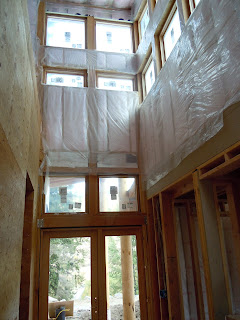Living with the threat of fire is one thing. It comes with the territory when you decide
to live in the country. You drive by the
remains of earlier forest fires, where the hills have greened up with
re-emergent shrubs but black toothpicks stand as reminders of the last big
firestorm. You start to look at trees
differently, see where they’re sick from an infestation of sucking
insects. Or where they’re healthy, but
too close to the house.
Living with fire is another thing entirely.
 |
| Seen from the rodeo: smoke in our canyon |
When real fires break out, as they did in early September in North Central Washington, the threat becomes all
too real. Columns of smoke announce a
lightning strike that made it to ground.
The crackling of the arrowleaf balsamroot on a hike a few weeks earlier
served as a cautionary note that such a strike would surely mean flames. When we saw this particular bit of smoke, we jumped in the car and headed home.
 |
| This fire burned a few acres over 3 days |
|
The storm generated thousands of lightning bolts as it
stalled over the center of the state for more than 7 hours. Over 100 fires were sparked that night. Some like this one, just half a mile further
up our canyon, were put out relatively quickly.
Our neighbors, together with area volunteers and a Seattle fire crew,
worked a line around the fire and by Tuesday had put it out. But bigger fires spread, several fires
merged, and the fight was on.
We had to head back to the west side the next afternoon,
leaving that situation there. It’s hard
to describe what it feels like to drive away, not knowing if the nearest fire would
make it over the ridge and head our way; of course, there is good reason for that fear. Then there is the feeling you should
be doing something to help the cause. But the reality is there is very little
you can do but wait and stay tuned, which we had to do from Bellevue.
Over the next 5 weeks, the fires continued to burn in the
sick forest south of us - but it burned half-heartedly. Calm winds and cooler
nights let the fire crews burn through a lot of the sick woods. They cut out a lot of the dead trees,
cleared the brush and set back- fires. We surmise it struck them as a good time to
let the fire burn the insect out, with calm conditions allowing them to contain
the spread to within the national forest. Maybe this will indicate we've cycled to the end of the epidemic.
 |
| On Blewett Pass at the height of the burn. |
Calm conditions, however, led to hazardous air quality
throughout the Wenatchee Valley, where the canyon landscape and a lengthy
weather inversion trapped the smoke at ground level.
Particularly hard-hit was the city of Cashmere, which experienced air
quality levels you just never see.
Schools were closed, people stayed indoors. Our house crews knocked off at mid-day when
the levels went the highest.
Having enjoyed the driest fall in recent memory, much-needed
rain fell on October 13, ending 35 days of smoke and uncertainty. Driving back, only a few very small spikes of smoke outlasted the overnight rainstorm.
So folks in the valley lost a month of the finest season of the year. That's too bad, because in a year of beautiful seasons in this place, each one takes our breath away. In the end, one firefighter died, but not a
single home was lost to fire. Stepping
outside our friends’ cottage on a Sunday morning, I could faintly smell smoke, but mostly I could
smell the fresh smell of new rain washing away a summer’s worth of dust and grime. What a relief.

















































